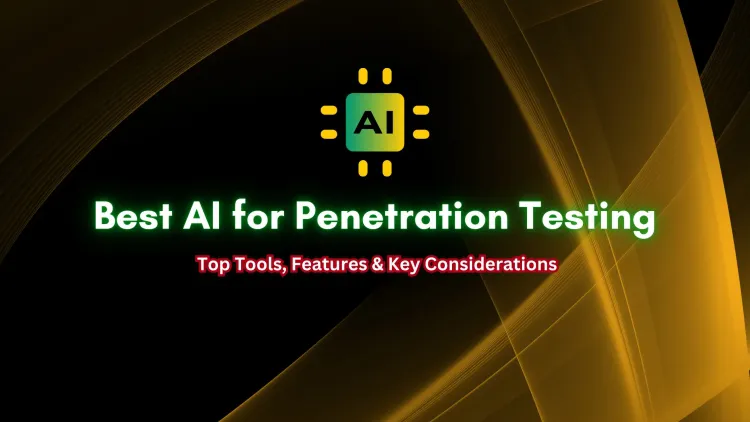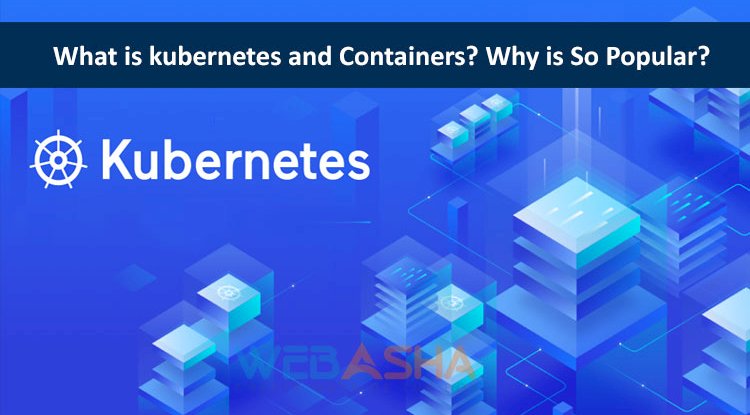Choosing the Best AI for Penetration Testing | Features, Tools, and Key Considerations
AI-powered penetration testing is transforming cybersecurity by automating vulnerability scanning, exploit detection, and security assessments. Unlike traditional manual testing, AI-driven tools use machine learning and deep learning to detect threats faster and with higher accuracy. This blog explores the key factors to consider when choosing an AI for penetration testing, compares top AI tools, and provides a guide to selecting the right tool based on accuracy, automation, adaptability, integration, and cost-effectiveness.

Table of Contents
- Introduction
- What is AI-Powered Penetration Testing?
- Key Factors to Consider When Choosing AI for Penetration Testing
- Comparison of Top AI-Powered Penetration Testing Tools
- Recommended AI Tools for Penetration Testing
- Recommended AI Tools for Penetration Testing
- Conclusion
- FAQs
Introduction
With the rise of sophisticated cyber threats, penetration testing (pen testing) has become a crucial practice for businesses to identify security vulnerabilities before hackers do. AI-powered penetration testing tools are transforming the cybersecurity landscape by automating vulnerability detection, reducing manual workload, and improving threat intelligence.
However, selecting the best AI for penetration testing requires careful evaluation of features, accuracy, adaptability, scalability, and ethical considerations. In this guide, we’ll explore the key factors to consider when choosing an AI-driven penetration testing tool and provide recommendations for top tools in 2025.
What is AI-Powered Penetration Testing?
AI-powered penetration testing uses machine learning (ML), deep learning, and automation to simulate cyberattacks on a system, identifying weaknesses faster and more efficiently than traditional manual testing. These tools can:
- Automate reconnaissance by scanning networks for vulnerabilities
- Identify zero-day exploits using AI-driven threat intelligence
- Simulate sophisticated cyberattacks to test security defenses
- Generate real-time reports on security gaps and remediation steps
Compared to traditional penetration testing, AI-based tools reduce human error, increase testing speed, and provide continuous security assessments.
Key Factors to Consider When Choosing AI for Penetration Testing
1. Accuracy and Threat Detection Capabilities
An effective AI penetration testing tool must have high accuracy in detecting vulnerabilities without excessive false positives or false negatives. The AI model should be trained on large cybersecurity datasets to recognize both known and emerging threats.
2. Automation and Efficiency
The AI should be capable of:
- Automating reconnaissance and scanning for vulnerabilities
- Prioritizing risks based on severity and exploitability
- Generating detailed penetration test reports for security teams
A highly automated AI reduces manual workload and increases testing efficiency.
3. Adaptability to Evolving Threats
Cyber threats evolve constantly, so the AI penetration testing tool must use machine learning algorithms to adapt to new attack techniques, zero-day vulnerabilities, and malware variants.
4. Integration with Existing Security Systems
The tool should seamlessly integrate with:
- SIEM (Security Information and Event Management) systems
- Firewall and IDS/IPS solutions
- Cloud security platforms
This ensures that penetration testing data can be used to strengthen overall security defenses.
5. Ethical AI Usage & Compliance
Ensure the AI tool follows ethical hacking principles and complies with cybersecurity regulations such as:
- GDPR (General Data Protection Regulation)
- ISO 27001 (Information Security Standards)
- NIST Cybersecurity Framework
Ethical AI ensures that penetration testing remains legal, responsible, and non-disruptive.
6. Customization and User Control
Security teams should have full control over AI-driven penetration tests, including:
- Customizable attack scenarios
- Ability to run manual override tests
- Configurable testing intensity levels
A balance between automation and human expertise is essential for an effective penetration test.
7. Scalability and Cloud Compatibility
If your business operates in a cloud environment, choose an AI penetration testing tool that supports:
- Cloud-based penetration testing for AWS, Azure, and Google Cloud
- Scalability for large networks and enterprises
- Multi-cloud security analysis
8. Cost and ROI
Evaluate the tool’s cost-effectiveness by considering:
- Pricing model (subscription-based vs. one-time license)
- Value of automated security testing compared to hiring manual pen testers
- Long-term ROI in reducing cybersecurity risks
Comparison of Top AI-Powered Penetration Testing Tools
| Feature | PentestGPT | OffensiveGPT | DeepExploit | XploitAI | Synack Red Team |
|---|---|---|---|---|---|
| Automation | High | High | Medium | High | Low |
| Threat Adaptability | Yes | Yes | Yes | Yes | Limited |
| Integration | SIEM, IDS, Cloud | SIEM, Firewalls | Limited | Cloud & On-Prem | Human-led |
| Customization | Advanced | Advanced | Limited | Yes | Manual Control |
| Cost-Effectiveness | Medium | High | Low | Medium | High |
| Best For | AI-driven penetration testing | Advanced offensive security teams | Basic automated pentesting | Cloud-based security | Hybrid AI + human red teaming |
Recommended AI Tools for Penetration Testing
1. PentestGPT
- Best for AI-driven pentesting automation
- Uses deep learning for vulnerability detection
- Generates detailed security reports
2. OffensiveGPT
- Designed for offensive security professionals
- Simulates red team operations
- Can be used for advanced threat simulation
3. DeepExploit
- Open-source AI penetration testing tool
- Automates vulnerability scanning and exploitation
- Suitable for penetration testing beginners
4. XploitAI
- Cloud-friendly AI penetration testing
- Can be integrated with multi-cloud security environments
- Supports real-time network monitoring
5. Synack Red Team (SRT)
- Combines AI-driven analysis with human penetration testers
- Suitable for large enterprises and critical infrastructure security
Conclusion
Choosing the best AI for penetration testing depends on your organization’s security needs, budget, and infrastructure. AI-powered tools like PentestGPT, OffensiveGPT, and XploitAI offer high automation, adaptability, and efficiency, making penetration testing faster and more effective.
However, AI should complement human expertise, ensuring ethical hacking practices, compliance, and real-world security validation. As cyber threats evolve, AI-driven penetration testing will be a crucial tool in staying ahead of attackers.
By carefully evaluating accuracy, automation, adaptability, integration, and cost, businesses can select the most effective AI penetration testing tool to strengthen their cybersecurity posture.
FAQs
What is AI-powered penetration testing?
AI-powered penetration testing uses artificial intelligence and machine learning to simulate cyberattacks, identify vulnerabilities, and assess security defenses more efficiently than traditional methods.
How does AI improve penetration testing?
AI enhances penetration testing by automating vulnerability scanning, adapting to evolving threats, reducing manual effort, and improving accuracy in detecting security flaws.
Can AI replace human penetration testers?
AI can automate many aspects of penetration testing, but human expertise is still required to interpret results, conduct advanced exploitations, and ensure ethical and legal compliance.
What are the benefits of AI in penetration testing?
AI improves speed, accuracy, scalability, and efficiency in penetration testing while reducing human error and operational costs.
Are AI penetration testing tools expensive?
Pricing varies based on features and scalability. Some open-source AI tools are free, while enterprise-level solutions may have subscription-based pricing.
Which industries benefit most from AI penetration testing?
Industries such as finance, healthcare, e-commerce, government, and cloud service providers use AI for penetration testing to protect sensitive data and prevent cyberattacks.
What’s the difference between AI and traditional penetration testing?
Traditional penetration testing is manual and time-consuming, while AI automates the process, making it faster, scalable, and continuous.
Can AI detect zero-day vulnerabilities?
AI can analyze patterns and behaviors to predict and detect potential zero-day vulnerabilities, although it cannot guarantee 100% accuracy.
What are the best AI tools for penetration testing?
Top AI penetration testing tools include PentestGPT, OffensiveGPT, XploitAI, DeepExploit, and Synack Red Team.
Does AI penetration testing require human supervision?
Yes, AI tools should be supervised and fine-tuned by cybersecurity professionals to ensure accuracy and ethical use.
How does AI penetration testing help in compliance?
AI tools assist with compliance audits and security assessments, ensuring organizations meet GDPR, ISO 27001, NIST, and PCI-DSS standards.
Is AI penetration testing safe for production environments?
Most AI tools support safe testing modes, but careful planning is required to avoid unintended disruptions.
Can AI penetration testing be used on cloud environments?
Yes, AI penetration testing tools are designed to assess cloud security for platforms like AWS, Azure, and Google Cloud.
How does AI prioritize security risks?
AI uses risk-based scoring and real-time analytics to rank vulnerabilities based on exploitability and impact.
Can AI penetration testing prevent cyberattacks?
AI penetration testing helps organizations identify and fix vulnerabilities before attackers exploit them, reducing the risk of cyberattacks.
What are the challenges of using AI in penetration testing?
Challenges include false positives, adversarial AI attacks, ethical concerns, and the need for ongoing AI model training.
How does AI handle social engineering threats?
AI can detect phishing attempts and analyze human behavior patterns, but social engineering assessments often require human intervention.
Is AI penetration testing legal?
Yes, when used for authorized security testing under an organization’s ethical hacking policies and legal guidelines.
How does AI-based reconnaissance work?
AI automates data gathering, network scanning, and OSINT (Open-Source Intelligence) collection to create an attack surface analysis.
Can AI penetration testing tools integrate with SIEM systems?
Yes, many AI penetration testing tools integrate with SIEM (Security Information and Event Management) platforms for centralized threat analysis.
How often should AI penetration testing be performed?
Organizations should conduct AI-driven penetration testing regularly, at least quarterly or after major system updates.
Does AI improve penetration testing efficiency?
Yes, AI speeds up vulnerability identification, risk assessment, and exploit simulations, making penetration testing more efficient.
How do AI penetration testing tools handle encrypted data?
AI tools analyze encryption algorithms and protocols but do not decrypt sensitive data unless authorized.
Can AI penetration testing help small businesses?
Yes, AI penetration testing provides cost-effective security assessments for small businesses that lack in-house cybersecurity teams.
Are AI penetration testing tools open-source?
Some tools, like DeepExploit, are open-source, while others are commercial solutions with advanced capabilities.
Can AI detect insider threats?
AI can analyze user behavior analytics (UBA) to detect suspicious activities, but insider threats require additional monitoring.
Does AI penetration testing support IoT security?
Yes, AI tools can assess IoT (Internet of Things) vulnerabilities and detect device-level security weaknesses.
How can AI penetration testing reduce security costs?
AI penetration testing automates many manual tasks, reducing the need for expensive external security audits.
Will AI make penetration testing obsolete?
AI will enhance penetration testing but will not replace human expertise in ethical hacking and red teaming.
What is the future of AI in penetration testing?
The future includes autonomous AI red teams, AI-driven zero-day exploit detection, and AI integration with quantum computing for enhanced cybersecurity.












![Top 10 Ethical Hackers in the World [2025]](https://www.webasha.com/blog/uploads/images/202408/image_100x75_66c2f983c207b.webp)

![[2025] Top 100+ VAPT Interview Questions and Answers](https://www.webasha.com/blog/uploads/images/image_100x75_6512b1e4b64f7.jpg)









